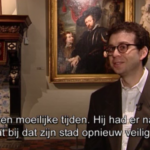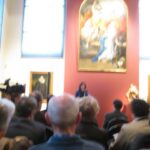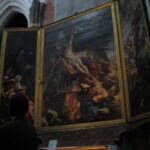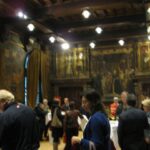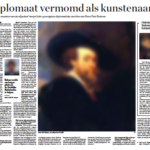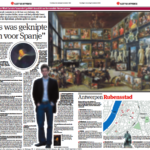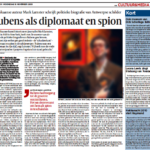This is a good week to be thankful, and I am especially grateful to everyone who made the launch of De meester van de schaduw in Antwerp such a success. Pub day itself began with a formal launch at the Rubenshuis, presided over by director Ben van Beneden and Rubens scholar Leen Huet. Attendees, including some twenty Antwerpers who had won space in a lottery held by the Gazet van Antwerpen (the city’s major daily), then followed me on a tour of Rubens sites (the home of Nickolaas Rockox, the Cathedral), culminating with a champagne reception at City Hall. By tradition, we ended the day with a round of Bollekes at the Engel. A few links and images:
ATV’s segment on me and the book on the show Onder Cover.
A tour of Antwerp and interview with journalist Ann Rootveld for the Radio1 program Mezzo, “Special Agent Rubens.”
Some images from the day:
Top Row [l-r]:
-My appearance on ATV
-The festive crowd at the Rubenshuis
-The festive crowd at the Rubenshuis
Second Row:
-Leen Huet discusses Rubens and his career
-Departing Rubenshuis
-The tour heads to Rockox House
Third Row:
-Looking at the Descent at the Cathedral
-Reception at City Hall
-Erick Rinckhout, Toon van Mierlo, me, Hal Lamster
Fourth Row:
-Feature in De Tijd
-Feature in Gazet van Antwerpen
-Feature in De Morgen

